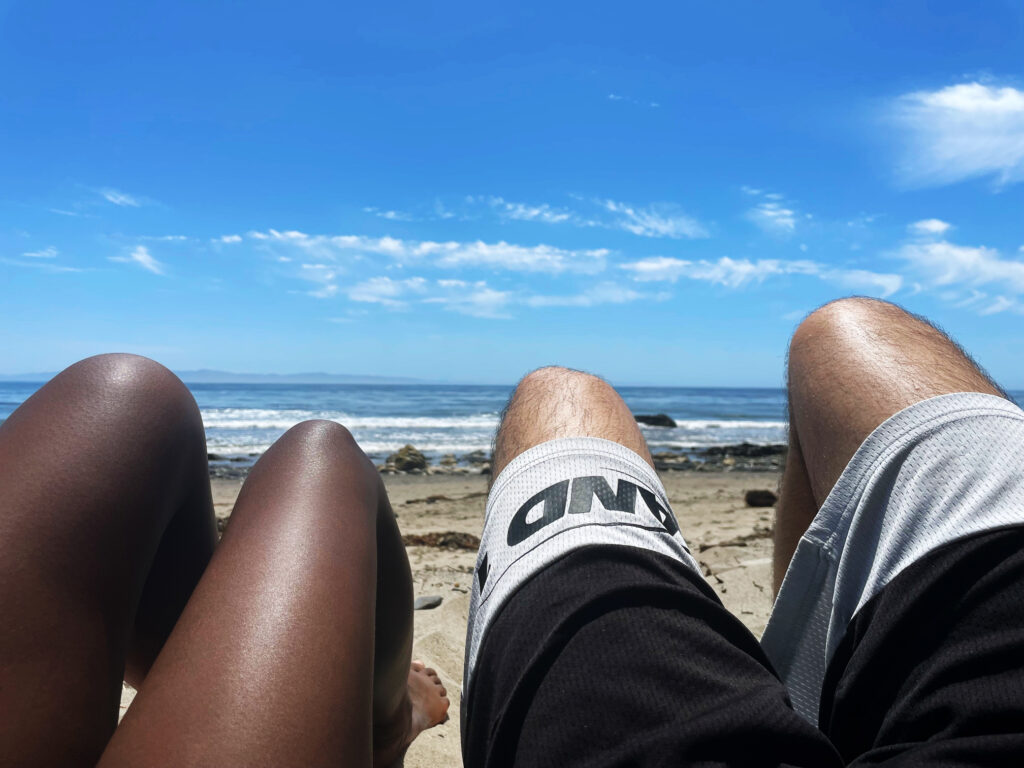
Did you know that extrinsic factors (elements in the environment) can account for 80% of external signs of aging such as wrinkles, sagging and photoaging? While genetics can play a role in aging, research has highlighted the significant role our diet, sleep and environment have in the external and internal aging process. Over the next few weeks we’ll shine a magnifying glass onto some of the strongest contenders in premature aging. This article will address UV radiation. What it is, different skin types’ reactions to UV rays and methods to limit overexposure.
Ultraviolet Exposure
UV radiation is electromagnetic radiation that lies between visible light and gamma ray wavelengths. UV radiation is divided into UV-A, UV-B and UV-C rays. UV-A has the longest wavelength (about 315nm-400nm) with less energetic photons, UV- C has the shortest wavelength (less than 280nm) and the most energy while UV-B lies in the middle(280nm-315nm). UVA is the most prevalent radiation (95%) and has less energy but penetrates deeper in the skin. UV-B typically is the culprit of sunburns and skin cancers as it has more energy than A and can reach the skin more than C. UV-C is nearly entirely absorbed by the Earth’s ozone layer. UVA is related to tanning and aging but with UV-B being the more biologically active radiation, it can lead to sunburns, DNA damage and sometimes cancer.
Not only is UV radiation considered a carcinogen as it has the ability to initiate tumors and also promote their growth, but it also causes inflammation. This is why melanin is important to the skin. Melanin reflects UV protons, preventing them from damaging the cell’s DNA. It acts as an antioxidant, neutralizing the free radicals.
i
- Those with darker skin have eumelanin which causes more pigment in the skin and those with fairer skin have pheomelanin causing lighter skin tone. Eumelanin is more effective at protecting the skin from UV damage than pheomelanin.
- Prolonged UV damage can cause premature aging to the skin. It can make it appear and feel wrinkled, hyperpigmented, dry and leathery. UV radiation does this by damaging DNA and breaking down collagen and elastin which are proteins that help keep skin tight and bouncy.
Recommended Sun Exposure Per Skin Type
Skin Type 1 (very fair skin, typically blue/green eyes. Red or blonde hair) within 5-10 minutes unprotected exposure in sun this skin type can get a sunburn. Never tans.

Skin Type II (Fair skin, eye color varies, blonde or brown hair). Within 20 mins of unprotected exposure to sun can experience sunburn. This skin type hardly tans and if so only moderately.

Skin Type III (light/beige skin, eye color varies, dark blonde or brown hair) This skin type can tan easier, and typically can see a sunburn occur at about 30 mins of unprotected sun exposure.

Skin Type IV (Olive skin toned, typically darker eyes and hair color) Tans very easily and needs about 50 mins of unprotected sun exposure to get a sunburn.

Skin Type V (brown skin, Typically darker eyes and hair color) sunburn occurs past 60 mins of unprotected exposure in the sun. Skin tone deepens

Skin Type VI (Dark/Deep brown skin, Typically dark eyes and hair color) sunburn occurs past 60 mins of unprotected exposure in the sun. Skin tone deepens

Even incidental exposure can be detrimental for skin types that have a harder time tolerating, UV radiation so sun protection in windows and sunblock daily is imperative.
Some Tips On Reducing Incidental Sun Exposure Are:
- Broad-spectrum Sunscreen of atleast SPF 30. Chemical sunscreen (oxybenzone, avobenzone, octocrylene, etc.) absorbs UV rays and converts it to heat while physical sunscreens like zinc oxide and titanium dioxide reflect UV rays away from the skin. Some chemical sunscreens like those with (oxybenzone or octinoxate) have been seen to be damaging to coral reefs. In some cases, chemical sunscreens have also been linked to causing sensitivity to the skin. Chemical sunscreens like oxybenzone, avobenzone, octocrylene, octinoxate, homosalate and ecamsule have been seen to enter the bloodstream easily in moderate amounts. However, FDA states it is currently unknown if the absorption of chemical sunscreen ingredients can be linked to any negative side effects or conditions. FDA has determined that zinc oxide and titanium dioxide have been ruled as safe. To note, the risk of unprotected sun exposure seems to outweigh the possible risks of sunscreen entering the blood system. Just because a chemical enters the bloodstream it doesn’t automatically deem it unsafe. However, it would be beneficial to have answers prior to rather than trying to gather them after chemicals have already been marketed as safe. When in doubt, physical sunscreens are a great option.
- UV umbrella UV protected umbrellas can create shade everywhere you walk and create a physical barrier between you and the sun
- Tinted windows Depending on the type and quality of the tint type it can block up to 99% of UV rays. Dyed films provide good UV protection by absorbing the UV rays, however, as the dye breaks down, the effectiveness does too. Metalized film reflects UV rays away from the window which also reduces heat, however it can also interfere with electronic signals. Ceramic films tend to be preferred as they aren’t metallic and don’t interfere with electronic signals. They’re also know for having some of the strongest UV blocking and heat rejection capabilities. With all tints, it’s imperative to have film that blocks both UV-A and UV-B rays.
- Driving gloves UV protected gloves block UV rays and act as a physical barrier from the sun
- Protective clothing sun protected clothing is often made of tightly woven fabric that is chemically finished to enhance UV protection
Also Read: 6 Specific Plants You Must Have To Improve Indoor Air Quality
References
Rodan, K., Fields, K., Majewski, G., & Falla, T. (2016). Skincare Bootcamp: The Evolving Role of Skincare. Plastic and reconstructive surgery. Global open, 4(12 Suppl Anatomy and Safety in Cosmetic Medicine: Cosmetic Bootcamp), e1152. https://doi.org/10.1097/GOX.0000000000001152
InformedHealth.org [Internet]. Cologne, Germany: Institute for Quality and Efficiency in Health Care (IQWiG); 2006-. How much sun is too much? 2011 Jul 22 [Updated 2018 Nov 29]. Available from: https://www.ncbi.nlm.nih.gov/books/NBK321117/D’Orazio, J.,
Jarrett, S., Amaro-Ortiz, A., & Scott, T. (2013). UV radiation and the skin. International journal of molecular sciences, 14(6), 12222–12248. https://doi.org/10.3390/ijms140612222
https://www.ncbi.nlm.nih.gov/pmc/articles/PMC7759112/
https://www.scirp.org/journal/paperinformation?paperid=48490





You must be logged in to post a comment.